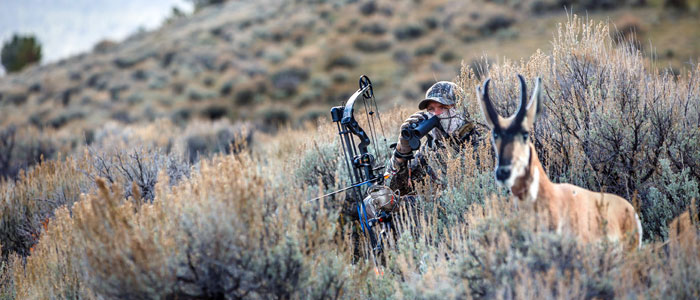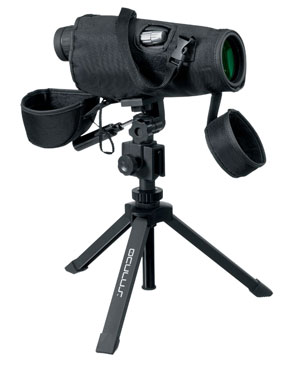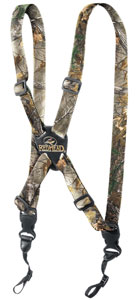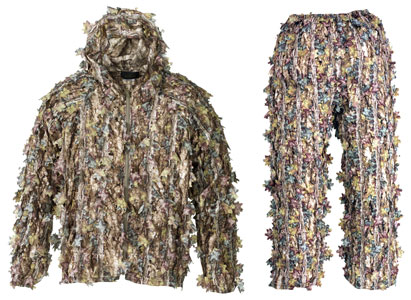
Ready to spice up your bowhunting with an antelope spot and stalk hunt? Then be ready to boost your skills up a notch by preparing months in advance for perhaps one of the most challenging, exciting and frustrating hunts you'll likely encounter.
 The antelope is often referred to in the west as a "speed goat," and for good reason. It's the fastest North American animal with recorded speeds of up to 70 mph on the open prairie. Additionally, their eyesight is superb — comparable to 8-power binoculars — making a stalk extremely difficult on arid land that offers, at most, thigh-high grass, sage brush or cactus for cover.
The antelope is often referred to in the west as a "speed goat," and for good reason. It's the fastest North American animal with recorded speeds of up to 70 mph on the open prairie. Additionally, their eyesight is superb — comparable to 8-power binoculars — making a stalk extremely difficult on arid land that offers, at most, thigh-high grass, sage brush or cactus for cover.
#1 Stay Stealth
As you approach, be aware of wind direction, being careful to keep the wind in your face. You'll also quickly learn to use the land's natural features to conceal your approach using the buttes and valleys to your advantage. If antelope spot you — even at great distances — your spot and stalk hunt usually ends instantly; so be prepared to begin stalks up to a mile away on unwary goats.
#2 Optics a Requirement
Excellent optics are a must — plan on using a spotting scope of 15-45x60mm power (waterproof , compact with rubber armoring for protection) for locating goats and a pair of lightweight, compact binoculars in 8x42 or 10x42 magnification while executing your stalk.
|
Product recommendation: Oculus Spotting Scope 15x-45x60mm
|
#3 Keep Gear Accessible
Keeping gear out of your way but quickly accessible is imperative. Use a harness system to keep binoculars close to your upper body. If you don't attach a quiver to your bow, count on using a quiver pack on your upper body. On your belt, keep your rangefinder, water bottle and knife. Keep a license, cell phone, toilet paper, compass, flashlight and snack bars in your pockets. You must equip yourself to be mobile while keeping yourself as invisible and silent as possible.
|
Product recommendation: RedHead Binocular Harness System
|
#4 Use Decoys
Portable decoys are a key element to getting in close in open terrain. Use antelope decoys which are lightweight to carry, quickly assembled and easily held upright with just one hand, leaving the other hand free to tote a bow during a stalk.
|
Product recommendation: Montana Decoy Antelope Collapsible Decoy
|
#5 Wear the Right Boots, Clothing
You will cover miles on any given day. Wear extremely comfortable, breathable and lightweight boots for long treks on rocky, dry terrain. A cap or head mask is a must for concealing your face from both the antelope and the elements. If excessive heat is a factor, which can easily happen even in September, consider wearing a 3D suit or camo bug suit with shorts and t-shirt underneath. Other alternatives are cotton-poly "tropical" weight camouflage pants and shirt, although these lighter weight fabrics will not give knees and elbows the protection you may desire when crawling along the ground. Wearing lightweight knee and elbow pads is an alternative to consider for making crawling approaches more tolerable when wearing lightweight camo.
|
Product Recommendation: RedHead "Be The Tree" Jacket/Pant 3D Suit
|
#6 Prepare Mentally, Physically
By far, the single most important factor in preparing for an antelope spot and stalk is preparing yourself mentally and physically for the shot. Gear typically used for whitetails will work equally well on the similarly sized Pronghorn, which averages 100 to 125 pounds in weight. It's imperative that several basic guidelines be followed:
- Shooting practice begins months in advance of your hunt;
- Shooting is done regularly; and
- Shooting to much longer distances than normal is mastered.
#7 Master the Long Shot
On the open prairies, the lack of obstacles makes long-distance bow shots easily executed. The key is executing the shot quickly and accurately, as even a small movement by an antelope 50 yards away can really mess up a shot.
Mastering shots up to 60 yards is ideal, keeping in mind your abilities and your bow's kinetic energy. If unable to execute accurate shots with the required energy for a humane kill shot, then practice to 50 yards — or whatever you determine you can confidently and accurately achieve on a routine basis. Know your limits and don't exceed them!
You'll be mildly surprised at the regularity in which antelope are encountered at distances of 50 to 100 yards and how challenging it is to creep undetected closer than 40 or 50 yards. Distance estimation skills must be superb. Expect to use a rangefinder constantly, even if you estimate distance well. The wide-open prairies make it very deceiving for guessing distances and if unaccustomed to hunting this type of terrain it compounds the problem. Don't chance blowing a shot after stalking for several hours!
#8 Know the Difference in Your Game
Keep in mind that both bucks and does sport horns. (Yes, horns. Their horn sheaths are shed annually and horns grow continuously throughout their life, unlike antlers.) Does or younger bucks are usually easily identifiable as their horns generally do not protrude above the length of their ears (about 2 to 4 inches), with the mature males sporting horns generally 12 inches or longer with curved prongs on the ends. Both sexes move sporadically during the day, making endless opportunities for a stalk possible. Once bedded down for the night, however, they will not usually move again until daybreak.
Proper gear and excellent shooting skills are keys to a successful spot and stalk. Start early by preparing yourself mentally and physically and you'll be ready for this most challenging bowhunt!
- 15105 views





